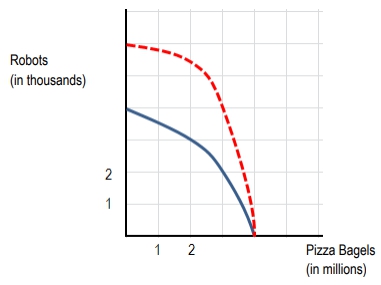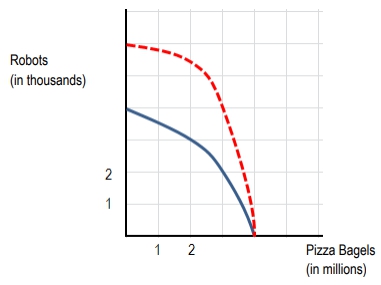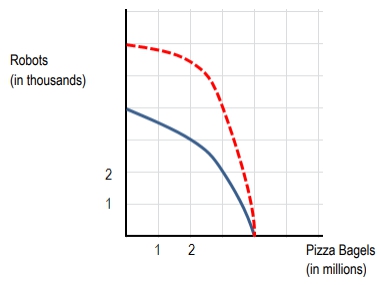In examining the impact of technological advancements and resource changes on societal productivity, it is essential to understand how these factors can lead to outward shifts in production possibilities. Over time, societies typically experience increases in productivity due to improvements in technology. This concept can be visualized through the production possibilities frontier (PPF), which illustrates the maximum output combinations of two goods that can be produced with available resources and technology.
When a technological advance occurs in a specific industry, it results in a shift in the PPF that affects only one good. For instance, consider a scenario where there is a breakthrough in pizza production technology, such as the development of a new oven that allows for faster pizza creation. In this case, the production of pizzas would increase, while the capacity to produce robots remains unchanged. This situation can be represented graphically, where the PPF shifts outward on the pizza axis, indicating an increase in the maximum quantity of pizzas that can be produced.
To illustrate, if the original PPF had a certain maximum output for both pizzas and robots, the new technology would extend the pizza production capability to the right, while the maximum output for robots stays constant. This means that even if the society chooses not to increase pizza production, the efficiency gained from the new technology allows for a reallocation of resources. Consequently, some resources previously dedicated to pizza can now be redirected towards robot production, resulting in an increase in the number of robots produced without sacrificing the existing pizza output.
This example highlights the importance of technological advancements in enhancing productivity within specific sectors, demonstrating how such changes can lead to more efficient resource allocation and increased overall production capabilities in an economy.






